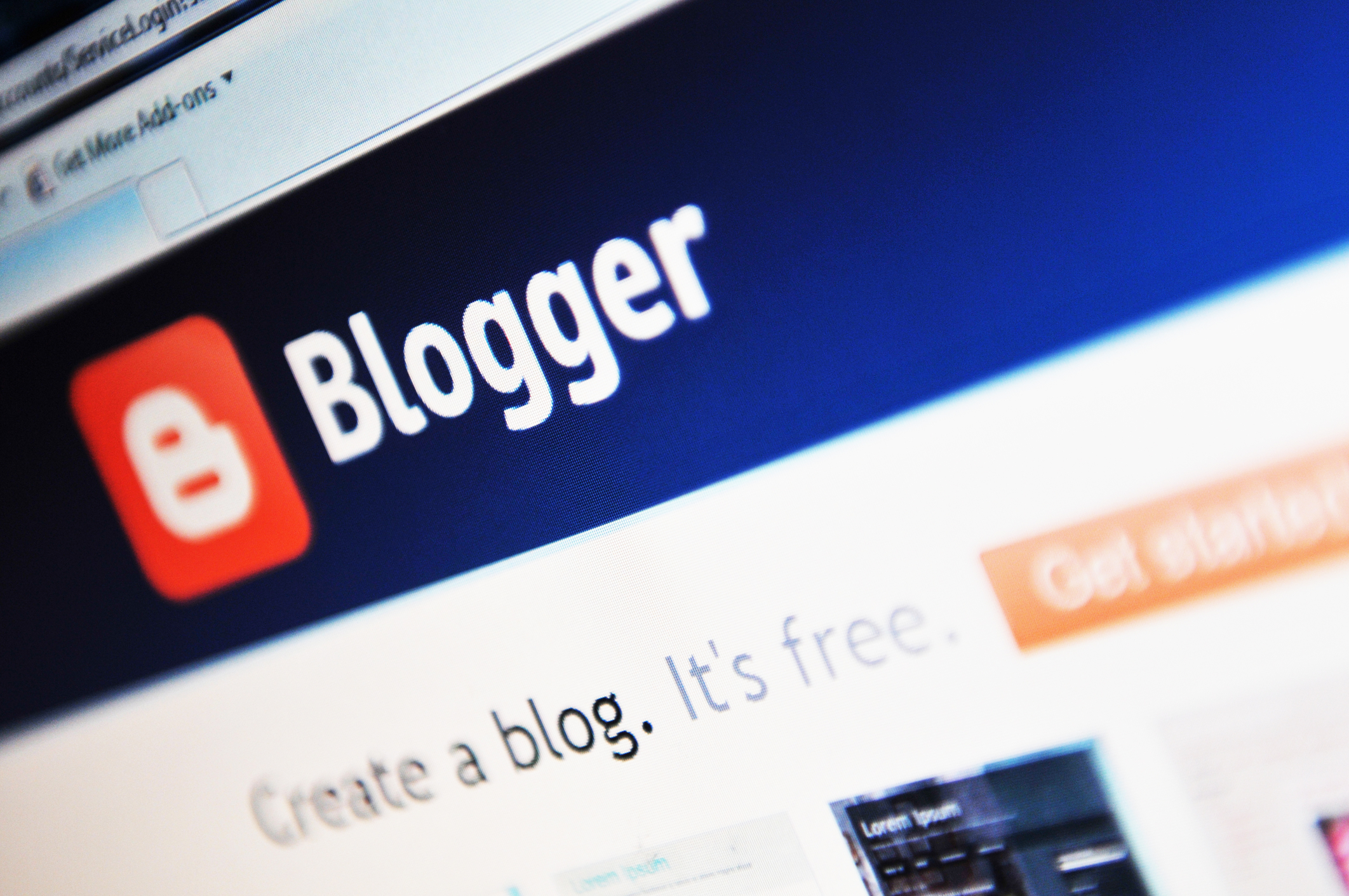The Golden Arches. The Nike Swoosh. The Disney “D.”
Nothing grabs your customer’s attention like a good logo. Not to mention how much a logo increases brand recognition.
It’s not just marketing jargon. Children can recognize logos before they can even read.
When it comes to your own business, you can’t ignore how effective logos are. You need a quality logo that is cleverly made and instantly recognizable.
But choosing a logo can be an overwhelming task.
Identifying a timeless logo is one thing, but creating one from out of thin air is quite another. Especially if you want to avoid the expense of hiring a graphic designer.
In this article, we’ll look at the best tips to keep in mind while choosing a logo and maximizing brand recognition.
Your guide to choosing a logo for your company
What does your brand stand for?
A logo speaks volumes. You’re going to need to make sure it says the right thing.
What values does your company want to present to the world?
Strength? Creativity? Whimsy?
When you’re choosing a logo, you want to make sure that you find a design that strengthens that message and stays on brand. The worst thing you can do is choose a logo that undermines your company’s values.
Nike’s Swoosh is a great example of a logo that works for the company’s values.
Nike is an athletic company, and its logo has a feel of movement, sleekness, and speed. What else would an athletic shoe company want to communicate?
But for a moment, let’s imagine that in an alternate universe, Nike’s logo was switched with Burger King’s.
Would a colorful cartoon burger communicate the kind of message an athletic company would want? Of course not.
This is an extreme example, but many companies make similarly off-brand mistakes.
Before you even start brainstorming about a logo, identify what ideals your business wants to associate itself with.
Types of logos
There are many different logotypes. Before you get to choosing a logo, narrow down what sort of design you want to use.
Most logos can be broken down into three types.
Typographic
In a typographic logo, the company name is stylized to make the logo. Some examples of famous typographic logos are Coca-Cola, Netflix, and Nintendo.
Typographic logos are great because they are typically easy to design. They also leave no confusion as to the company’s name.
Illustrative
Illustrative logos utilize drawings that usually communicate the company’s product.
For instance, Red Lobster, Olive Garden’s vines, or Chuck E. Cheese’s cheery portrait (even if the new Chuck looks creepy. Branding, people).
Abstract
Unlike illustrative logos, which are often quite detailed, abstract logos are very minimal. Many utilize simple shapes and only one or two colors.
Abstract logos are generally standalone icons that represent the company. The strongest of them can communicate the company’s identity without the need for text.
For example, the Target bullseye, the Pepsi swirl, the Starbucks siren, or the oft-mentioned Nike swoosh.
The most recognizable logos tend to be abstract. But creating a simple logo that is strong enough to be recognizable is challenging.
Many logos are a blend of two of these types.
For instance, Wal-Mart’s star logo, which accompanies their typographic logo. Another great blended logo is the World Wildlife Fund, which uses the strong simplicity of abstract logos to illustrate a panda bear.
Consider colors
In nature, color is its own language.
Peacocks use their colorful plumage to attract a mate. Many snakes use colorful markings to warn other animals that they are venomous.
It’s just as vital in marketing.
Color is one of the most important things to consider when choosing a logo design.
And not just for aesthetics. Psychology has shown us that different colors evoke different feelings.
When you’re thinking about brand’s values, choose colors that will say the same thing.
Red communicates vibrancy, strength, and urgency. This makes it perfect for health companies and gyms.
Blue evokes a feeling of trust and familiarity. Ever wonder why almost every social media uses blue in their logo?
If you want to instill a sense of joy in your customers, think yellow. You’ll notice that yellow logos are popular in fast-food and retail. This is because these companies want to be associated with happiness.
Green is often associated with growth and wellness. This is the go-to color for yoga studios, financial firms, and health food stores.
For companies wishing to appear strong and authoritative, nothing speaks louder than black. It’s no-nonsense and sends a clear message.
Maybe your company likes to have a little bit more fun. You might want to consider an orange logo, as it evokes playfulness and youth.
But don’t limit yourself to only one color. Combinations can speak just as loudly.
For example, look at all the All-American companies using three colors (two guesses as to which three). This is intentional.
Mix and match colors to align with the message you want to send the world.
Go subliminal
Everyone loves a clever logo.
To stand above the pack, consider implementing some hidden messages.
The most famous example of subliminal the FedEx logo. Hidden in the negative space between the E and X is an arrow.
It’s very subtle—you may have never noticed it before. But this hidden arrow does a great job communicating speed and progress, even without realizing its there.
Amazon’s logo is another great logo with a subliminal message.
The orange line beneath the company name evokes a friendly smile, right? But take another look.
You’ll notice that the line goes from A to Z. Clearly, this is to communicate that their inventory is just as diverse.
So when choosing a logo, don’t be afraid to hide some hidden meanings in there.
Don’t be afraid to go negative (space)
When designing anything—logo, website, whatever—it can be tempting to use as much of the available space as possible.
Typically, this is how you get bad design.
You might feel restricted if you focus on creating a logo as iconic as the Nike swoosh out of a single solid object.
But before you panic, remember that you can make empty space work for you as well.
Many logos (like FedEx) make clever use of negative space to create a sophisticated logo.
Take another look at the WWF panda. Notice that the most recent versions only use black.
The rest of the logo is empty space. Yet your brain fills in the outlines automatically.
Another logo that makes great use of negative space is the USA Network. If you look closely, you’ll notice that there is no S in the logo.
Rather, the U and A shapes include portions of the S’s negative space. This makes the S plainly visible despite not actually existing.
Similarly, the Girl Scouts logo features the profile of three girls, despite using only a single color.
Negative space opens up a whole slew of possibilities for logos. Try it out!
Size matters
Remember that despite whatever size you make your initial logo design, it will be displayed in tons of different sizes.
From billboards to business cards, your logo is going to have to be recognizable in any size.
Recently, Instagram made waves when they rolled out a new logo.
The original logo was an intricate illustration that evoked the charm of the original Polaroid cameras. The new logo was criticized or being crude in comparison.
Despite the original logo’s well-loved reputation, it had a big problem.
Because it was so detailed, it didn’t look great when it was scaled down to the size of an app icon on a smartphone.
And considering that Instagram is a mobile app, that’s no bueno.
The new logo may seem overly simplistic in comparison, but it is far more scalable than the original.
Keep scalability in mind when choosing a logo. Zoom out on your design to see how it looks
Zoom out on your design to see how it looks at a small size. Do details get lost? Does it get cluttered?
If so, simplify the design. You’ll be much happier with your letterhead.
Versatility is key
You’re likely designing your new logo on a computer screen. But that’s not the only place it will be seen.
Your logo will be printed in a plethora of mediums. Your company will put it on everything from building signs to shirts to pens.
Colorful, intricate details look great on screen, but if you’re trying to get embroidered work shirts, it’s going to lose clarity.
Simple is better.
No matter how great it looks on a computer screen, you have to keep the design’s other uses in mind.
Spare no expense
Choosing a logo is not something to enter into lightly. This is your company’s identity, after all.
Not to mention that ditching a bad logo is expensive.
Choosing a logo is going to be costly.
And not necessarily financially. Even if you design a new logo yourself, you need to spend time on it.
It may seem expensive, but you can’t afford not to have a great logo.
Get designing!
Choosing a logo is important, but it doesn’t have to be a headache.
Try out our free logo maker and get started choosing a logo that will make your company stand out!
If a picture is worth 1000 words, a logo is worth so much more.
Having a good logo can make or break your business. And there is much more that goes into a logo than just a fancy typescript or catchy design.
Choosing the right color is one of the biggest decisions in the logo design process
Red is one of the most famous logo colors in the world, whether a logo is all red or is coordinated with another color.
Some of the most iconic brands in history are known for the bright red logos.
Coca-Cola, McDonald’s, Youtube (and a TON of others) have become synonymous with their logos.
Find out here what having a red logo will mean for your business.
Eye Popping Red Logos
Red is one of the most eye popping colors there is on the color spectrum.
With a red logo, you are guaranteed to catch the eye of many potential customers.
Red will automatically attract a person’s eye to the picture or cause them to do a double take.
Because red is so eye popping it will stand out against any color the logo happens to be placed next to.
Choosing to go with red for your logo will definitely help you stay in the minds of any prospective customers.
Boldness
That same eye popping quality that a red logo has will also give the logo a sense of boldness.
Red has also long been known to symbolise love. The combination of love and boldness will give a red logo a feeling of passion and emotion.
That love and boldness will invoke a trust between the consumer and the company.
The boldness that a red logo brings will come along with a feeling of excitement from the consumer.
They will see a company’s logo and feel adventurous and will be drawn to the company by adrenaline and will want to feed their adventurous side
Energy
Having a red logo means portraying an image of being energetic and active.
In customers’ eyes and mind seeing red as a symbol of a business means they can assume an intense and upbeat business.
Fire is almost always depicted in a shade of red. When people think fire, they think red and it goes for the opposite.
When people think red, fire will be one of the first things to come to mind. So the same characteristics of fire – intensity, energy, enthusiasm – will be applied to your red logo whenever someone sees it.
Red is a loud, strong color so if you want to be a loud, strong company, you will definitely want to utilize red in your logo.
A lot about a company is said by the color of their logo.
Before going out and immediately applying all the red you can find to your company’s new logo, first think about what your business is selling and the personality of your business.
If you are in the finance world or want to project a sense of calm and tranquility, then you will want to steer clear of using a red logo.
However, if you are in the entertainment business or especially the food business, red is a great color to put in your logo.
Likewise, if your company is fun, vibrant, and full of energy having a red logo will show your customers just that.
The right logo can do wonders for your brand.
Take Apple, for instance. Their logo isn’t particularly complex. In fact, they took an extremely minimalist approach. And yet as soon as someone sees that white apple with a bit missing, they know exactly what it means.
As a blogger, it’s important that you do everything within your power to get your name out there. There’s a lot of competition in the blogosphere, and your content should stand out.
Logos for bloggers should bring the brand to mind as soon as the audience sees it.
Here are some of the biggest ways that using a logo can create a brand for your blogging business.
Logos for Bloggers Establish Identity
When push comes to shove, your logo is all about brand recognition and creating an identity. Whether you’re outsourcing or using a WordPress frontend plugin, create something recognizable.
Take a moment to think about all the branding your audience is exposed to on a daily basis. Everything from billboards to t-shirts features brand names and logos.
If you’re not making an effort to stand out, you’re going to get lost in the shuffle.
An effective logo should be eye-catching, but it should also evoke feelings. Depending on your location, certain colors can portray different things, so it’s important to know what you want your colors to say.
Take the color red for instance. It’s a simple, common color, but it’s able to convey:
- Anger
- Passion
- Forcefulness
In contrast, something softer, such as a pastel yellow can evoke feelings such as:
It may sound silly, but if you neglect the psychological impact of color, your logo will suffer.
Typeface Matters
Think of typeface as the icing on your logo’s cake. It’s decorative but adds a distinct flavor at the same time.
In fact, the typeface you choose is every bit as important as color. Accordingly, there’s an awful lot to consider.
For instance, should your logo be in print or cursive? What about the age-old serif vs. sans serif debate?
When it comes to logos for bloggers, these simple questions have a tremendous impact on their brand.
Spend a few minutes looking over this list, and note just how many types of font there are.
These things do matter. Take a moment to consider one of the most famous blogging logos out there, the WordPress logo. You can likely conjure up the image of the curvy W without even seeing the logo.
The Best Logos for Bloggers are Simple
Let’s stick to the WordPress example for a minute. Their logo is about as simplified as it gets, it’s just a white W in a baby blue circle.
And yet most bloggers would be able to spot the logo anywhere. What makes it so effective? It isn’t busy or distracting at all, yet it’s instantly recognizable.
Ultimately, that’s your goal as a blogger. Your logo needs to be simple, clean, and to the point. There’s just something elegant about a simple design.
When it Comes to Logos for Bloggers, the Logo Makes the Brand
As you can see, it’s important that you use your logo to establish an identity for your brand. Through the use of color and font, your logo can capture the imagination of your audience.
Whether it’s Disney, Folgers, or even Subway, there’s one thing to take away from this article. Logos make the brand, not the other way around.
Create an identity like no other through the use of your logo.
If you work in fitness, you already know how important personal and professional branding is.
Especially as your training program gets larger, and you have more avenues to reach audiences, it’s easy for your brand to get lost.
One way to make sure you stay as consistent as you tell your clients they should be?
By creating unique and motivating personal fitness logos to build your brand.
Learn some of the best ideas on where to get started in this post.
1. Create Designs That Focus On Results
Most clients hit the gym because they want to make a change. They want to look better, improve their fitness, and even fight dangerous diseases like obesity and diabetes.
Of course, if you’ve ever pushed yourself in the gym, you know how tempting it can be to quit. And if you’ve ever struggled to lose weight, you know how tough it can be to take that first step.
Effective personal training logos need to be just as motivational as fitness experts themselves. Through your logo, you want to transform personal training.
They need to advertise and convey that what clients are looking for is possible, and they need to focus on results. We love the idea of having a thinner body outlined in a different color, inside of a larger person. Additionally, images like a client lifting a barbell over their heads or high-fiving with a trainer on a scale are also motivational ideas.
2. Use Colors To Keep Your Logo Welcoming
Lots of people don’t get the fitness expertise and help they need because they’re intimidated by the atmosphere of a gym. Or, they could be embarrassed and insecure about working with a personal trainer.
It’s one of the reasons it can be so tough to get clients.
While your image choice needs to rely on motivation, your color choice can reflect a welcoming, no-judgement vibe.
Bright, festive tones like blues, pinks, oranges, and greens help to keep things positive.
3. Reflect Your Training Style
Every personal trainer has a different, distinct style — and personal training logos need to reflect that.
If you teach barre fitness, it wouldn’t make sense to have a logo featuring weight training. If you’re a kickboxing coach, your logo should illustrate that.
The same goes for your individual training method. Are you a tough love trainer? Your logo could show you cheering on a sweating client on the treadmill. If you have a softer touch, your logo could include an image of you helping a client hold a barbell.
You’re Ready To Create Motivational Personal Training Logos
Thanks to these tips, you know how to create personal training logos for your gym or fitness brand that will convince even the biggest couch potato to make a change in their lives.
If you have several different ideas, we suggest using a free online logo maker tool to see which one looks the best. You could even poll clients and employees to select the favorite.
No matter which logo you choose, these tips will help you create one that grows your brand and your business — while shrinking the waist sizes of your clients.








